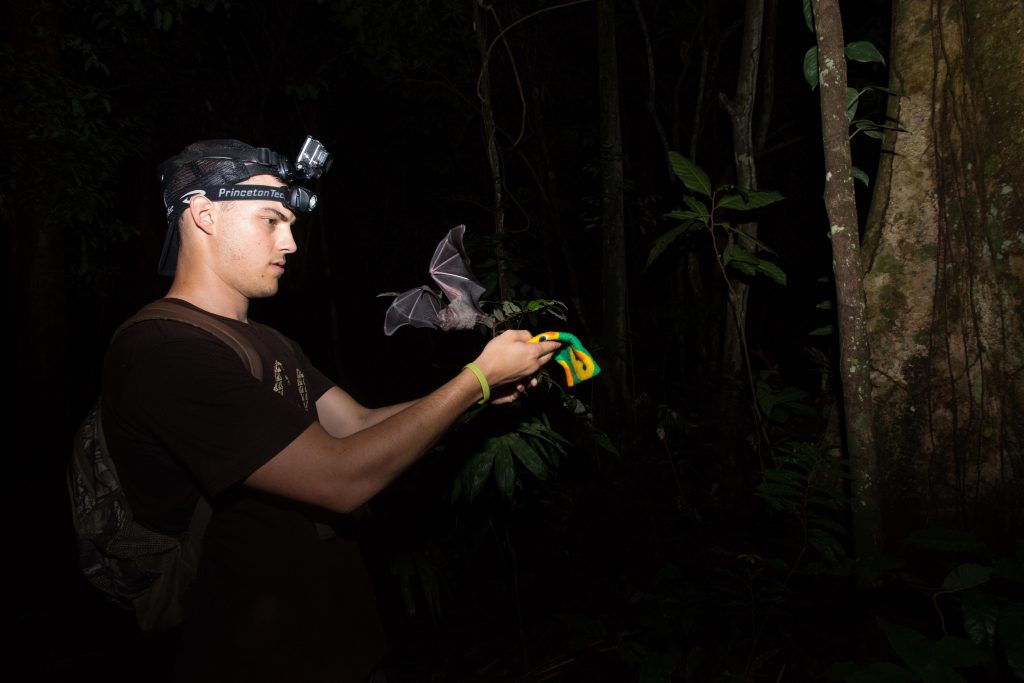Frog Hunting Bats Overcome Human Noise In Search of Prey

Former Smithsonian Tropical Research Institute (STRI) intern, Dylan Gomes studies Frog-Hunting Bats. In particular, he investigages how these animals are able to effectively hunt Túngara frogs by hearing the frogs’ mating calls despite increasing noise levels in the environment due to humans. While the effect of human noise levels has been studied on the behavior of whales and birds, it hasn’t focused as much on other species.
That is, until now.
Lead author on an article in Science Magazine, Gomes’ research focused on the way bats learn to change how they listen, from an “eavesdropping” approach to a technique known as “pinging echolocating.” Gomes, whose study ties together animal behavior, sensory ecology, and conservation says, “As sources of anthropogenic noise continue to expand, animals will, ultimately, have to overcome noise in one way or another.”
After receiving his Bachelor’s degree from the University of Montana with Dr. Doug Emlen, Gomes landed an internship at STRI researching with staff scientist, Dr. Rachel Page. Gomes credits Page with helping him develop the skills he needed to undertake this type of study. Now a Fulbright scholar at the Max Planck Institute for Ornithology in Germany, Gomes continues to study bats doing field work in Namibia with the Zoological Society of London and plans to start his Ph.D. at Boise State University. His planned research focus? The sensory ecology of bats, of course!
Click here to learn more on Dylan Gomes’ Seriously Amazing internship experience!






